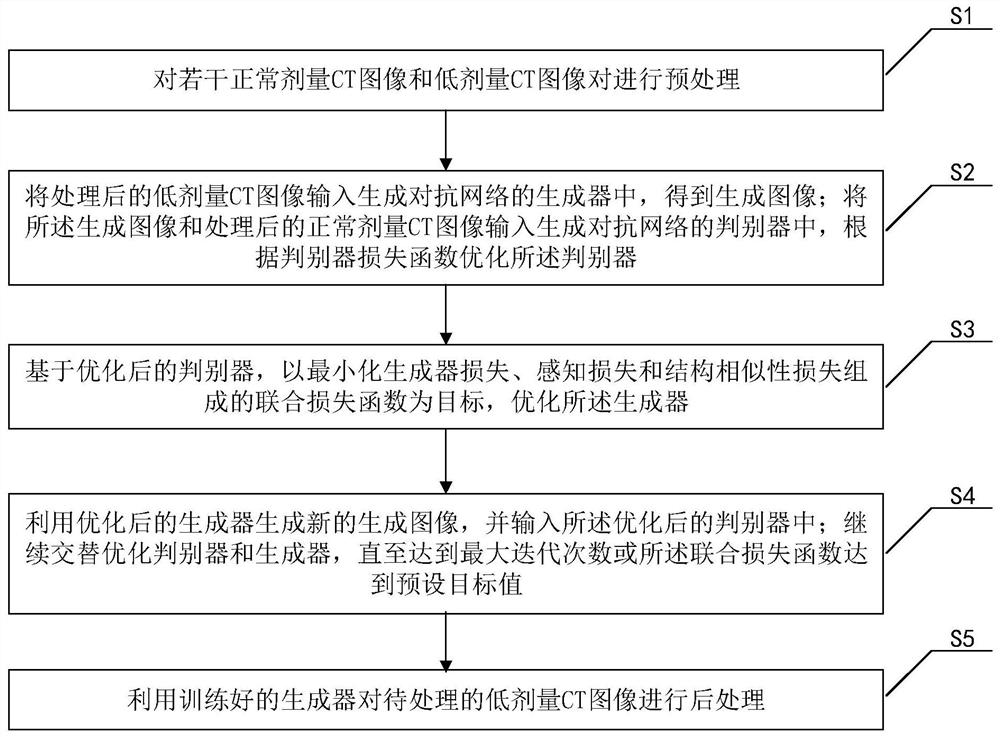Deep learning post-processing method for solving low-dose CT image over-smoothing
A CT image and deep learning technology, applied in the field of image processing, can solve the problem of over-smoothing of the output image, achieve the effect of preventing the image from being over-smooth and increasing the receptive field
- Summary
- Abstract
- Description
- Claims
- Application Information
AI Technical Summary
Problems solved by technology
Method used
Image
Examples
Embodiment 1
[0045] figure 1 It is a flow chart of the deep learning post-processing method for solving low-dose CT image over-smoothness provided by the embodiment of the present invention, and the method includes operation S1-operation S5.
[0046] In operation S1, preprocessing is performed on several pairs of normal-dose CT images and low-dose CT images. specifically:
[0047] Convert the pixel values of several pairs of normal-dose CT images and low-dose CT images to floating-point numbers, and normalize the image matrix:
[0048]
[0049] Among them, I n is the nth pixel value of the CT image matrix, I' n is the normalized pixel value, I min and I max are the minimum and maximum values of the pixel matrix, respectively.
[0050] Operation S2, input the processed low-dose CT image into the generator of the generative adversarial network to obtain the generated image; input the generated image and the processed normal-dose CT image into the discriminator of the generative ...
Embodiment 2
[0089] A computer-readable storage medium, comprising: a stored computer program; when the computer program is executed by a processor, it controls the device where the computer-readable storage medium is located to execute the solution to the problem of low-dose CT image over-smoothness provided by Embodiment 1 above. Post-processing methods for deep learning.
[0090] In order to further illustrate the effectiveness and reliability of the present invention, the present invention is tested on a simulated 1 / 3 dose of walnut CT image, and compared with the common method (REDCNN) and its own network ResiGAN under different loss functions, To illustrate the effectiveness of the network structure and the effectiveness of the loss function of the method of the present invention.
[0091] In the joint loss function, different trade-off parameters can be set according to the actual situation, α 2 The larger the value, the greater the perceptual loss contribution, and the image inclu...
PUM
 Login to View More
Login to View More Abstract
Description
Claims
Application Information
 Login to View More
Login to View More - R&D
- Intellectual Property
- Life Sciences
- Materials
- Tech Scout
- Unparalleled Data Quality
- Higher Quality Content
- 60% Fewer Hallucinations
Browse by: Latest US Patents, China's latest patents, Technical Efficacy Thesaurus, Application Domain, Technology Topic, Popular Technical Reports.
© 2025 PatSnap. All rights reserved.Legal|Privacy policy|Modern Slavery Act Transparency Statement|Sitemap|About US| Contact US: help@patsnap.com



